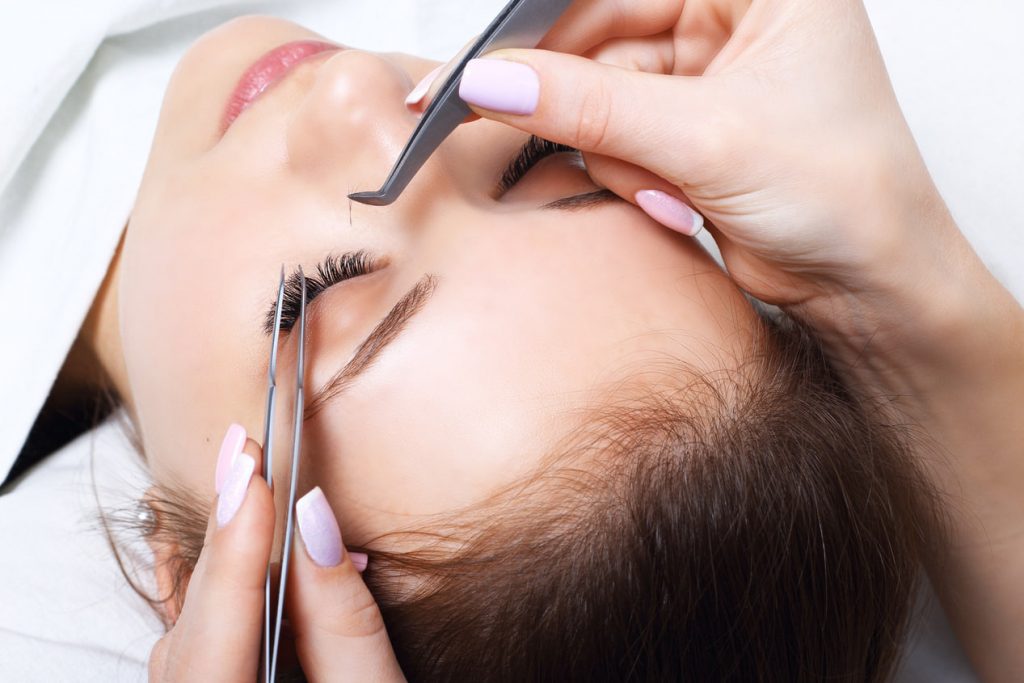Lash Extension Aftercare: What Clients Need to Know (And What Artists Should Teach)
Getting lash extensions is a transformative experience. Whether someone wants a bold, dramatic look or subtle enhancement, lash extensions instantly boost confidence and style. But the real secret to long-lasting, beautiful lashes isn’t just in the application — it’s in the aftercare. Unfortunately, many clients overlook or misunderstand how important proper maintenance really is. That’s why lash artists must take the time to educate every client on the do’s and don’ts of lash care.
Why Aftercare Matters
Lash extensions are delicate by nature. They’re applied with precision and designed to stay put for several weeks, but they aren’t invincible. Improper aftercare can lead to premature shedding, poor retention, irritation, or even damage to the natural lashes. On the flip side, a client who follows the right aftercare routine can enjoy their lashes longer, save money on fills, and maintain the health of their natural lash line.
For lash artists, clear aftercare education also builds trust. When a client knows how to care for their lashes and sees results, they’re far more likely to return, refer others, and become loyal to your service.
The First 24-48 Hours
The first two days after getting extensions are crucial. During this period, the adhesive is still curing and vulnerable to moisture, oils, and heat.
Clients should:
- Avoid water, steam, sweat, and humidity. That means no showers, saunas, or intense workouts.
- Stay away from oil-based products, especially around the eyes.
- Avoid touching, pulling, or brushing the lashes excessively.
Lash artists should clearly explain this window of time and provide a written reminder if possible. It helps prevent misunderstandings when lashes shed prematurely due to early moisture exposure.
Daily Lash Maintenance
Once the initial curing period has passed, maintaining extensions becomes part of a daily beauty routine. Contrary to some myths, lash extensions need to be cleaned — not left untouched.
Encourage clients to:
- Clean their lashes daily with a lash-safe cleanser (oil-free, gentle, and formulated specifically for extensions).
- Use a soft cleansing brush to remove debris, makeup, and oil buildup.
- Gently pat dry and brush through with a clean spoolie brush afterward.
This routine helps prevent irritation, infections, and poor retention. Unwashed lashes can lead to conditions like blepharitis, which can cause swelling and make lash wear unsafe.
Sleeping and Physical Habits
Clients may not realize how much sleeping positions and unconscious habits can affect their lashes. Friction and pressure are enemies of lash retention.
Key tips for clients:
- Sleep on your back when possible, or use a silk pillowcase to reduce friction.
- Avoid rubbing your eyes or pulling at the lash line.
- Don’t use mechanical eyelash curlers — they can break both extensions and natural lashes.
Lash artists should demonstrate how even small adjustments in habits can make a big difference in how long the lashes last.
Makeup and Product Use
Some makeup products are lash-extension-safe, and others are not. Oil is the main ingredient to watch out for, as it can break down the lash glue.
Advise clients to:
- Use only oil-free makeup removers and micellar water.
- Avoid waterproof eyeliner and mascara, which can be hard to remove without pulling.
- Be cautious when applying makeup close to the lash line — powders, liners, and shadows should be applied gently and cleaned off thoroughly.
Makeup can be worn with extensions, but the key is to use light, lash-safe products and always clean thoroughly at the end of the day.
When to Schedule Fills
Lash extensions naturally shed with your natural lash cycle, which means clients will lose some lashes each week. Regular fills keep the set looking full and fresh.
Recommended schedule:
- Every 2–3 weeks for standard fills
- Every 1–2 weeks for volume sets or clients with fast-growing lashes
Explain to clients that waiting too long between fills may require a full new set, especially if more than 50% of the lashes are gone.
Common Client Mistakes
Even well-meaning clients sometimes make aftercare mistakes. As a lash artist, it’s helpful to remind clients of common errors like:
- Using cotton pads near the eyes (fibers can snag on extensions)
- Applying heavy creams or serums too close to the lash line
- Skipping cleaning because they’re afraid of shedding (unclean lashes can shed more)
- Attempting to remove lashes at home (always return to a professional for removal)
Being proactive about these issues saves time, prevents damage, and improves the overall experience for everyone involved.
The Lash Artist’s Role in Aftercare Education
It’s easy to assume clients know how to care for their lashes, but most don’t. As a lash professional, you are also an educator. Providing clear, simple, and consistent aftercare instructions sets the standard for how seriously your work should be treated.
Best practices for lash artists:
- Give verbal and written aftercare instructions after each appointment
- Offer or sell lash-safe cleansing kits and tools
- Follow up with new clients after their first appointment
- Share reminders on social media or in your booking confirmation messages
Clients who feel informed and cared for are far more likely to return — and refer their friends.

